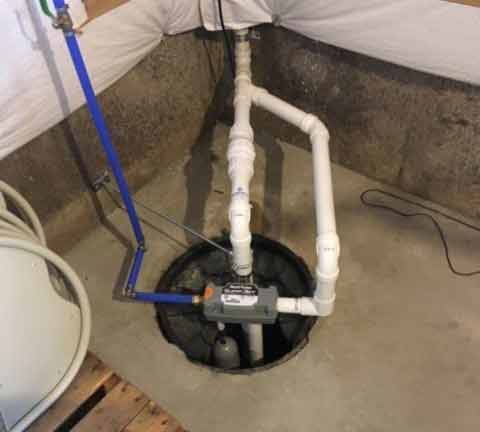The sump pump is your first line of defense against flooding in your home’s basement and the costly repairs that can follow such incidents. But for a sump pump to do what it is designed to do, you need to always ensure that it is working as it should.
Sump pump malfunctions don’t happen frequently but when they do, the problem is often not discovered until it is too late. As KRS Holdings warns, homeowners typically get to realize that the sump pump has failed after their home is unexpectedly flooded.
The financial and emotional toll of dealing with flooding in your home is nothing compared to the effort it takes to make sure your sump pump is working. To protect your precious home and its valuable content, you should know how to maintain your sump pump.
How does a sump pump work and how can you prevent sump pump failures that expose your home to flood damage? This maintenance checklist explains everything you need to know to avoid unpleasant surprises from your sump pump.
How a sump pump works
The sump pump prevents flood damage to those parts of your home that are below ground. A sump pump automatically removes water that finds its way into the basement or parts of the home that are below ground. It reduces the risk of water damage by runoff or snowmelt.
The sump pump sits inside a basin or sump; a pit that is usually 2 feet deep and 18 inches wide. This pit collects any water that enters the basement area and when the water reaches a certain level a floating switch inside the sump triggers the sump pump.
The water is then pumped out of the basin to a location outside the home where it will not endanger the house. Once the basin is empty or the water inside it reaches a certain level, the pump switches off. This entire process happens without the homeowner’s involvement.
But sometimes the sump pump will fail. Sump pump failures may be due to disruption of power supply, the pump becoming clogged with debris, or its internal components malfunctioning. Periodic inspections help you catch sump pump failures before they result in disaster.
A sump pump maintenance checklist
Check the power supply
Ideally, the sump pump should be on an independent circuit. Check the sump pump power cord every quarter to see if it is connected. If there is a power outage during a storm, check the sump power supply when the electricity supply is restored.
Make sure the pump is level
It is normal for the motor to vibrate when the sump pump runs. Over time, these small vibrations can lead the sump pump to shift out of place. If the sump pump is out of level, it will not function as expected.
Check that the sump pump starts automatically
Pour enough water into the sump pit to raise the float or pressure sensor until the pump is activated. Note strange sounds or smells while the pump is running. If the pump does not power on automatically, you have a sump pump or float switch failure.
Remove the sump pump
If the pump is working properly, remove it from the basin and proceed to the other steps listed below. If the pump is unresponsive, get an expert to take a look at the sump pump and float switch.
Smell the sump for odors
Unpleasant odors from the sump pump usually come from the sump pump trap. To clean the trap and get rid of the odor, use a mixture of five parts of water to one part of bleach to clean the basin.
Clean the impeller
The sump pump has a small filter known as the impeller. If this filter is clogged, the pump will stop working or make a whining noise when it runs. This problem happens often but is easily fixed by cleaning the impeller.
Inspect the check valve
The check valve prevents backflow after the sump is turned off. Sometimes it can get damaged or moved out of place. Remove the check valve and inspect it for damage. Replace it with the check valve’s arrow pointing in the direction of the sump pump.
Check the discharge pipes
Discharge pipes convey water from the sump pump to a dry well on your property or into the municipal storm drain. Leaks and weak points on the pipes will impair the effectiveness of your sump pump. Also, check the discharge pipe vent for debris.
Remove debris from the basin
Debris will often find its way into the basin along with water entering the pit. This debris should not be allowed to get into your pump. Keep the sump basin free of debris to protect the pump and float mechanism.
Install a backup power and backup pump
In the event of power outages during heavy thunderstorms, you need a backup power source to ensure your home is not left at the mercy of the elements. A backup sump pump will also protect your home in case your primary sump pump fails during an emergency.
